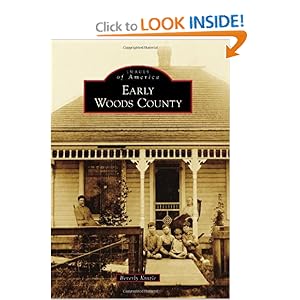The women of Woods County, Oklahoma were from the time of the ‘Run’ of 1893 till the present a sturdy lot.
When reading journals of the early pioneers to gather information for my book, Early Woods County, the women talked about living for months at a time on claims with small children, far from any town while their husbands traveled to find work for cash money, so that they could come back and make improvements on their claim. She was the glue that held the family together.
Many of the original women that came west to settle in the newly opened Cherokee Strip were from back east, and had probably lived for a while in Kansas. They came from established homes, and had attended school and were church orientated.
They moved here to live in sod houses, dug-outs, or half dug-outs. This generally was one large room with a small loft for the children to sleep in. They cooked over an open fireplace and in the summer cooked outside. They felt lucky to have a dug well on their claim, or be close to a spring for water.
The women of Early Woods County were very concerned about education, and after getting a roof over their heads, the next thing they wanted was schools for their children.
This has carried forward until this day. Woods County is fortunate to have good public schools, a Vo-Tech School and Northwestern Oklahoma State University. Women that have the desire for education can obtain it to any degree that she wants.
It was the push of the women that the churches eventually outnumbered the saloons.
There are several entries in journals that stand out in my mind about the early women:
One woman said when she was expecting relatives from back east she was uneasy about them staying in her dugout home, as the relatives had a fine two story home. But, much to her surprise they praised her ingenuity in running the homestead under such primitive conditions.
Another woman thought she was privileged to have a wood floor laid over the dirt.
But when the boards warped and the bugs and snakes came in she ripped it out herself.
Several mothers told how she and the girls would work in the fields at harvest if there were no boys in the family. Today women and girls still work at harvest time driving trucks full of grain to the elevator and plowing with tractors. Of course it is much more comfortable with the cabs and air-conditioning that is now on the tractors and trucks.
My mother-in-law who was born in a dugout in 1894 and lived there for many years always said the greatest invention that came to the homesteader’s was indoor plumbing. When I was a little girl in the 1940s during WWII living on a farm we had an outhouse. It always terrified me to have to go there to take care of business.



No comments:
Post a Comment